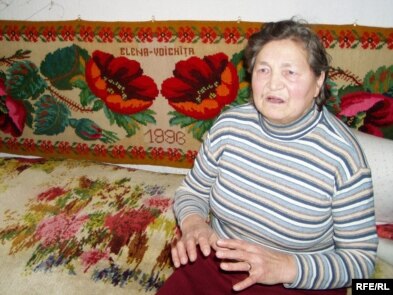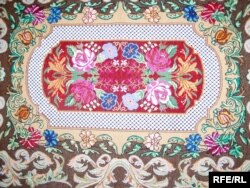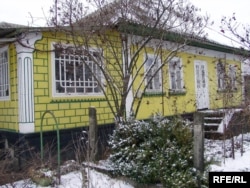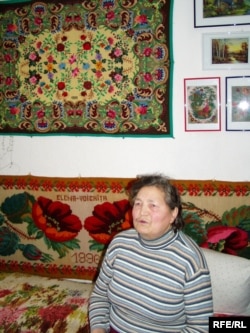For years I have cautioned about "Short Notice Auctions" and this article demonstrates why. When you see an ad about an auction held in a ballroom or convention center watch out. If it suggests a link to the "FEDERAL" Government watch out. If it suggests that the rugs were seized by Customs, Watch Out.
MONTREAL - Ross Palumbo thought he knew a deal when he saw one.
He spotted a newspaper ad for an auction of "seized cargo, unclaimed abandoned jewelry and watches, estate Persian rugs" at Montreal's Dorval Hilton, and decided to go have a look.
A men's Rolex watch came up for bid. The Oyster Perpetual Datejust was a beauty with 10 diamonds embedded in its dial and a gleaming steel and gold bracelet. Palumbo was delighted to win the watch with a bid of $4,500, far less than the written appraised retail value of $12,000 provided by the auction house.
His delight was short-lived.
Palumbo sent the watch to Rolex Canada for an independent appraisal for insurance purposes. Two weeks later, he got a letter from the service department with bad news; his timepiece was a mutt requiring more than $5,000 in parts and repairs.
"After careful examination, we noted that the watch has been modified in many areas: non-Rolex diamond dial, non-Rolex bracelet and converted bezel and crystal ... these conversions do not meet Rolex technical requirements. We regret that we cannot carry out normal service unless the watch is returned to its original design."
The auction business is a largely unregulated frontier in Canada, with rules that vary from province to province. Some jurisdictions, like Saskatchewan and Alberta, require auction companies to register, buy a licence and post a $25,000 bond before conducting business. That bond can be used to settle claims by dissatisfied consumers.
In contrast, anyone can call him or herself an auctioneer in Quebec. There is no licence or bond requirement. This lack of consistent regulation means there is little to deter unscrupulous auctioneers from plying their trade across the country and little recourse for consumers who feel victimized.
Two travelling auction houses, Heritage Auctioneers and Federal Auction Service, are not related, but both employ advertising and sales tactics that have put them at odds with regulators across the country and resulted in consumer complaints. One of Federal Auction Service's auctioneers is Salim Khan, whose siblings Anwar and Azam Khan have been sanctioned repeatedly by U.S. regulators for publishing misleading auction ads and misrepresenting the provenance of goods they have offered at auction through various companies in the U.S.
Salim Khan is quick to distance himself from his siblings, saying he has not worked with them for several years. He told the Montreal Gazette in a fax: "Although members of the Federal Auction Service team are part of the Khan family, they wish to state publicly that they do not have any manner of business relationship with Azam and Anwar Khan or companies under their ownership."
-
On Jan. 1, a Montreal woman and her boyfriend attended an auction held by Heritage Auctioneers in a chilly warehouse near Montreal's Trudeau airport. She bought two ladies' diamond rings for $450 and $800, plus a 15 per cent buyer's premium paid directly to the auction house and PST and GST. The rings came with appraisal certificates that stated their retail value was $2,100 and $4,000, respectively.
An independent appraiser consulted by the Montreal Gazette disputed the stated carat weight of the diamonds. Based on the size and quality of the stones, gold content and labour involved in their making, she estimated the rings' retail value at $900 and $1,100 each.
In the industry, retail value is calculated by adding the value of materials and labour and multiplying by a 250 per cent markup. With the rings, the auction house appeared to inflate the price by 500 per cent.
"You didn't overpay, but you didn't get what you thought you bought,' said Colleen Whitthoeft, an appraiser with more than 20 years of industry experience.
She neither buys nor sells jewelry but grades stones for the diamond trade. She also does consumer appraisals for insurance and estate purposes.
Another Montrealer paid nearly $30,000 for three rugs, two pairs of earrings and a gold bracelet at a Heritage auction at a downtown Montreal hotel. The merchandise came with appraisal certificates pegging the value of the merchandise at more than $266,000.
An independent appraiser later told the buyer his carpets were low-grade and worth "pennies on the dollar," the buyer said. The jewelry was also worth less than the auction house claimed, according to a jewelry appraiser engaged by the buyer.
All three consumers were drawn to the auctions after reading newspaper advertisements placed by Heritage Auctioneers, whose company headquarters are in Richmond Hill, Ont.
The ads, featuring diamond jewelry and watches, promised "sheriff-seized jewelry" and "items previously seized by customs." All three went looking for bargains and say they ended up learning a hard lesson in "buyer beware."
Palumbo's lawyer sent a tersely worded letter to the auction house. Eventually he received most of his money back, minus a $450 "handling fee." The entire experience has soured him on auctions.
Heritage Auctioneers refused a Gazette interview request.
Heritage, which also uses the name Heritage International, Bloomsbury & Butterfield and Bloomsbury Auctioneers & Appraisers, is operated by 1656786 Ontario Inc. The company organizes auctions in hotel meeting rooms and banquet halls from Victoria to St. John's, N.L.
On Feb.18, the company hosted a sale at Calgary's Blackfoot Inn. Last Sunday it hosted an auction of "Canadian government certified N.W.T. certified Canadian diamonds," among other baubles, at the upscale Hilton Lac-Leamy in Gatineau, Que.
*
Recently, Federal Auction Service organized a sale at Montreal's Intercontinental Hotel featuring, among other items, a Mercedes-Benz SL65 and a Rolls-Royce Phantom, neither of which was actually on display.
In April 2004, former NDP MP Svend Robinson was caught on camera pocketing a diamond ring during a Federal Auction Service sale in Richmond, B.C. The auction company did not press charges.
In March 2005, the company paid a $25,000 penalty to the Competition Bureau after agreeing not to represent itself as having been retained, authorized or instructed to sell items on behalf of the federal government.
The bureau got involved after Federal Auction Service began publishing ads in 1999 that falsely asserted it was liquidating inventory seized by customs and or recovered from the proceeds of crime. Despite that brush with regulators, the company's website still has a link titled "government contracts," and at its recent Montreal sale the auctioneer assured the audience that Federal Auction Service "is contracted to the government of Canada."
Federal Auction Service asked that any questions about the company be submitted in writing by fax.
In August 2002, Alberta's Government Services Appeal Board cancelled the auction licence of a company called Federal Collection Service after finding it contravened the province's Fair Trading Act by repeatedly running auction ads that misled the public. Kashif Khan was identified as one of those responsible for placing newspaper ads on the company's behalf.
In October 2002, Kashif Khan was back in business operating under the name of Federal Auction Service (Alberta) Inc. A spokesman for Alberta's Ministry of Government Services said FAS employees Amir Durrani and Khan have been cautioned repeatedly in that province for misleading advertising about "seized goods." The pair are now director of auctions and assistant director of auctions for Federal Auction Service in Ontario.
The Ontario consumer protection office has had four written consumer complaints about Federal Auction Service and two other inquiries since 1999. Five complaints were about misrepresentation of merchandise and the sixth was about the company's failure to offer a refund, said Ciaran Ganley, a spokesman for Ontario's Ministry of Government Services.
Both Ontario's Better Business Bureau and Quebec's Consumer Protection Office have received complaints about Heritage Auctioneers. In Quebec, the office registered complaints in 2002 and 2005 from consumers who alleged that the company made false representations about either the value or provenance of the jewelry and carpets the company sold them. The office suggested both complainants contact lawyers, said department spokesman Jean-Jacques Preaux.
At the Federal Auction Service event in Montreal, the auctioneer was a master of smooth delivery, reassuring those in the audience that they could bid with confidence.
"Federal Auction Service gets the watches seized by Canada Customs, by tax recovery and by theft recovery," said Salim Khan before the bidding started. "You have to be careful that what you buy is authentic, ladies and gentlemen. Birks got caught and Rolex pulled their licence."
That provoked an indignant response from Birks.
"That is an outrageous statement," said Michelle Laberge, a spokesman for the jewelry chain. She explained that during the economic downturn of the mid-1990s, Rolex stopped supplying chain jewelry stores, including Birks. "The decision had to to with the number of bankruptcies in the industry, not with issues of fraud."
Birks & Mayors Inc., the jewelry chain's parent company, continues to sell Rolexes in its 28 Mayor's stores in the U.S., she added.
The Auctioneers Association of Canada has been monitoring the activities of certain itinerant auction houses since the 1980s and is frustrated by the lack of national governing standards.
"We're trying to promote a degree of professionalism in the industry, but with the different rules in every province it's hard to get anyone's ear," said Hudson auctioneer Gary Peterson, chairman and past president of the AAC.
Auctioneers belonging to the 270-member AAC must adhere to a code of ethics. Consumers who feel they have been wronged have a forum for complaint. The group mediates and, if necessary, will ask a three-member panel to rule on a dispute. Peterson has been on the losing end of panel decisions. He never likes it, but recognizes that without public confidence the auction business can't work.
Federal and Heritage are not members of the AAC.
The AAC would like to see rules put in place requiring auctioneers to be members of recognized industry group such as the AAC or its U.S. equivalent, the National Auctioneers Association.
In the end, healthy skepticism may be a consumer's best protection when attending an auction. The Montrealer who spent $29,894 on low-grade carpets and jewelry said he went to the Heritage auction with $300 in his pocket, planning to buy a piece of jewelry for his wife. He quickly got caught up in the excitement of the event.
"The merchandise looked real and they had documents for everything they sold me," said the man, who asked not to be identified because of his embarrassment.
He did not find it strange that two of the appraisal certificates were signed "James Goodenough," while the third was signed "Jim Mirkalami." Mirkalami is the director of Heritage Auctioneers.
Palumbo's doctored Rolex was supposed to come with documents certifying its authenticity as well as the watch's original box. Instead, he received a photocopied certificate and a generic gift box by mail weeks after the auction.
-
Heritage and Federal Auction Service share similar business practices that raise eyebrows in traditional auctioneering circles.
They include lightning-quick visits to different cities and an equally quick departure. Both companies allow a one-hour preview before the auction begins and require those attending to register with a piece of photo identification before being allowed to enter the auction room. In Montreal, Federal Auction required members of the public to leave a piece of ID at the registration desk.
Most controversial of all, both auction companies erect barriers in the centre of the hall so that participants on the left side cannot see the participants on the right side. At times, including the event at the Intercontinental, the auctioneer appeared to be accepting bids from empty chairs at the back of the hall. All three of the consumers interviewed by the Gazette said they were uncomfortable with the way the sightlines were blocked.
"The bid kept going up and up, but I couldn't see who was bidding against me," said the buyer of the oriental carpets. "I've been to many other auctions and never seen that."
At FAS's Intercontinental sale, barriers bearing "customer testimonials" were placed at the back and in the centre aisle. Participants who tried to stand at the back of the room were told to sit by auction staff. The auctioneer later defended the practice, saying blocking the centre aisle was a security measure to deter thieves.
"There is more than $20 million worth of jewelry in the room, so if you discuss our security arrangements I hope you are ready to accept liability for what might happen," Salim Khan said.
mlamey@thegazette.canwest.com
Montreal Gazette
SIDEBAR
MONTREAL - A company calling itself Citizens Union ran ads in the Montreal Gazette last fall for an auction of "ex-police confiscated valuables."
Another ad showed a palatial estate and promised a "valuable partial collection of spouse of Ex-Real Estate Developer/Builder. Goods previously acquired by auction house as a result of previous financial restructuring."
The company is one of several operated by brothers Anwar and Azam Khan, whose roving auctions have been sanctioned by regulators in several U.S. states for misleading the public about the origins or value of the items they auction.
Among the items listed were "etchings, lithographs and other mediums by and after Picasso, Chagall" among other noted artists. The auction also featured fine furniture, hand-knotted Persian and oriental carpets in silk and wool, as well as jewelry and watches.
The Khans are the brother of Salim Khan, Federal Auction Service's auctioneer.
One of Anwar and Azam Khan's preferred techniques is to rent for a weekend an exclusive estate that is up for sale and then stage an auction on the grounds, leading buyers to believe they are buying items from the estate.
Here is a roundup of some of the rulings against Anwar and Azam Khan.
- August 2004: Fidelity First Financial paid a $10,000 US fine in Massachusetts for falsely advertising multimillion-dollar estate sales and government-seized property. The attorney general found that many of the items advertised at its auction as valuable antiques were in fact cheap reproductions. The company admitted no wrongdoing.
- October 2004: Fidelity First Financial cancelled an auction in Sioux City, Iowa, after receiving a subpoena from the state attorney general ordering the company to prove the authenticity of works by Dali, Chagall and Manet advertised in an auction ad. The action came after the auctioneers advertised a "spectacular estate auction" to liquidate items belonging to "an internationally renowned Art and Antique Dealer," "due to divorce." The subpoena remains in effect.
- January 2002: The Auctioneers Board of Virginia fined Azam Khan $3,000 and suspended his auctioneering licence for one year after he was found to have run false, misleading or deceptive advertisements and failed to keep proper records.
- November 2001: Oregon's attorney general filed a permanent injunction against Fidelity First Financial for publishing ads that misled the public into thinking the goods being auctioned were connected to the sale of million-dollar homes. Fidelity First was ordered to submit all its ads to the Justice Department before publication for a period of four years. The company was fined $2,500.
- November 2000: Azam Khan was fined a $2,000 civil penalty in Pennsylvania for having disciplinary actions against him in two other states.
- April 2000: Azam Khan's auctioneer licence was suspended in Florida and he was fined $1,500.
Montreal Gazette
© (c) CanWest MediaWorks Publications Inc.











